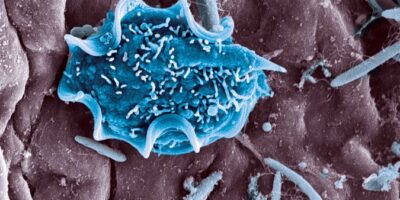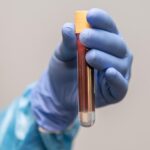Acquiring more diseases is understood to come hand-in-hand with getting older. Our bodies get frailer as the number of proteins suffering from loss-of-function increases and interferes with essential biological processes. Medawar’s hypothesis states that natural selection declines with age. As age increases, the likelihood to pass on genetic information decreases. There is less selection pressure for genes that express harmful phenotypes that only emerge in older individuals and not in younger ones, but there are other tissues that appear to have a higher selection pressure on genes expressed in older individuals.
Aging and genetics have respective contributions to gene expression that are tissue-specific, but its pattern across tissues was yet to be investigated. Ryo Yamamoto and their team from UC Berkeley explored this unknown territory. An expression quantitative trait loci (eQTL) is a fragment in the genome that influences variation in the phenotype expression of a gene, usually linked with single nucleotide polymorphism (SNP). Yamamoto et al. hypothesized that aging diminished the effect of eQTL due to the variance of factors that contribute to gene expression, their study aimed to identify the individual contributions of genetics and aging across different tissues.
To tackle this, Yamamoto and their team used various bioinformatics methods to analyze genomic datasets. They first obtained transcriptomic data of various tissues from 948 humans from GTEx, a database of gene expression across human tissues, and corrected the data with PEER, a statistical tool to control confounders. They categorized the samples into two groups, young and old, with 55 years old as the splitting point. Through this analysis, they found that the expression of genes in the young group compared to the old showed stronger eQTL predictive power. Afterward, they used a statistical approach with the Jensen-Shannon Divergence (JSD) metric to discover the gene expression pattern in each sample group and found that the correlation between heterogeneity of gene expression pattern and aging did not strongly apply to every tissue.
Next, PredixCan was used to measure the value of heritability (h2) for each gene, and they found that increased expression variance reduced the heritability of gene expression. Assessing each tissue, they found heritability to be consistent across tissues. Both genetics and age influenced gene expression patterns, but the extent of age contribution varied across tissues. Then, using CIBERSORTx, they assessed six immune cell subtypes and discovered an increase in the predictive power of eQTLs in the younger group. A JSD approach was done to these six cell subtypes, and accordant with previous findings, they found that heterogeneity increased with age.
The Breusch-Pagan test and Gene Set Enrichment Analysis (GSEA) were then used together to determine the value of βage of various genes. They found that pathways involved in mitochondrial, metabolic processes, and translation factors had a negative βage, pointing to genes associated with these pathways decreased in expression in relation to aging. They found this trend to be consistent among several tissues, indicating these genes to be highly conserved and were vital contributors to tissue-specific aging. In contrast, they found a positive βage for genes in blood and arterial tissue specifically associated with the interferon-gamma response, an immune pathway.
Yamamoto et al. subsequently used gnomAD to get the loss of function intolerance (pLI) score and found that for most tissues, βage negatively correlated with pLI, meaning as age increased with gene expression, loss of function also increased, consistent with Medawar’s hypothesis. Interestingly, they also found five tissues that exhibited the inverse trend: prostate, transverse colon, breast, whole blood, and lung tissue. These non-Medawarian tissues were expressed at a higher rate in older individuals and are frequently used as diagnosed sites for cancer. Utilizing COSMIC cancer browser, they found that these tissues carried a high mutation frequency. This discovery showed the proportional relation between βage and frequency mutation. This was the selection pressure that acted on genes expressed later in life in highly proliferative cell types.
These experiments furthered our understanding of the tissue-specific pattern of aging, genetics, and gene expression. This study shed light on the relationships between eQTL predictive power with aging, heritability with variance, and βage with pLI across different tissues. For diseases where age is the main risk factor (e.g. cancer, dementia, heart disease), understanding the feebleness of using eQTL for tissues involved in these diseases is critical in approaching them. A future study that Yamamoto et al. denoted can be done was expanding the analysis to the single-celled level to get the cell-type specific pattern on age and genetics, and its relevance to cancer.
Source:
Yamamoto R, Chung R, Vazquez JM, Sheng H, Steinberg PL, Ioannidis NM, et al. Tissue-specific impacts of aging and genetics on gene expression patterns in humans. Nat Commun. 2022 Oct 3;13(1):5803.








